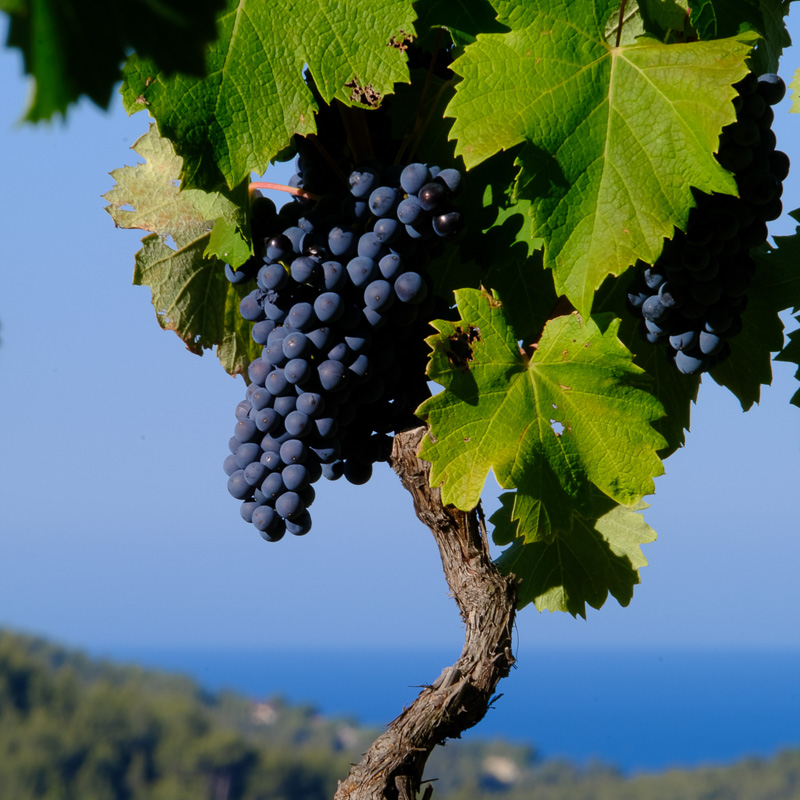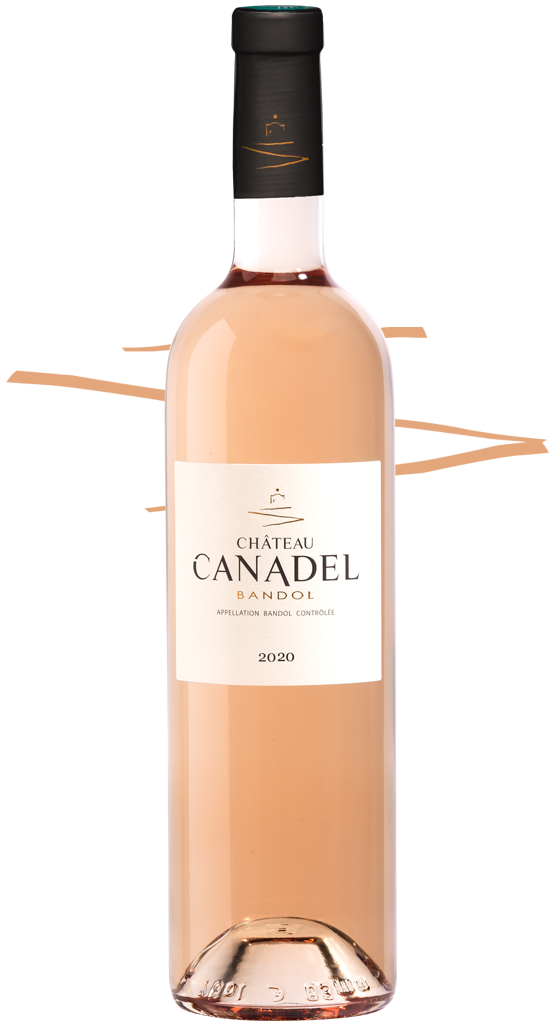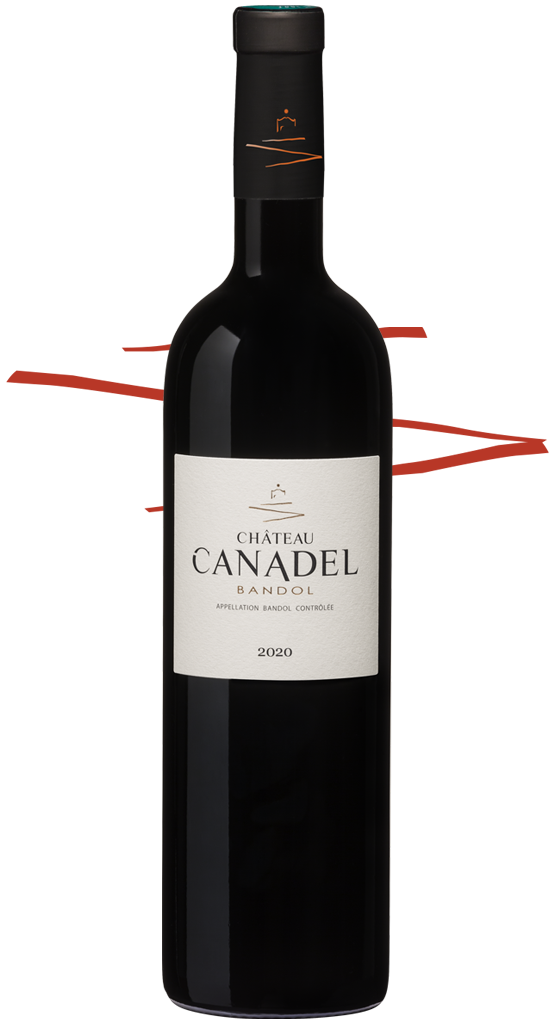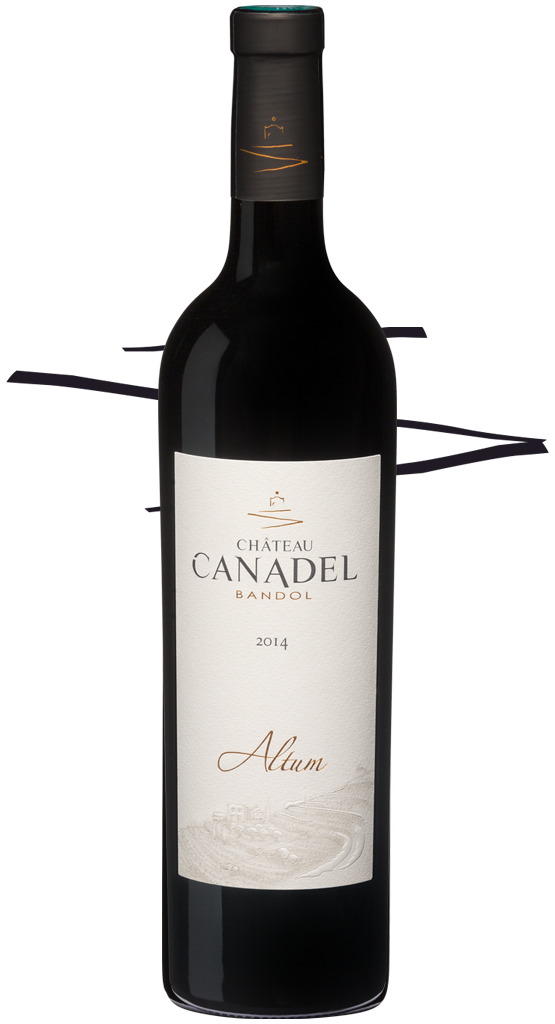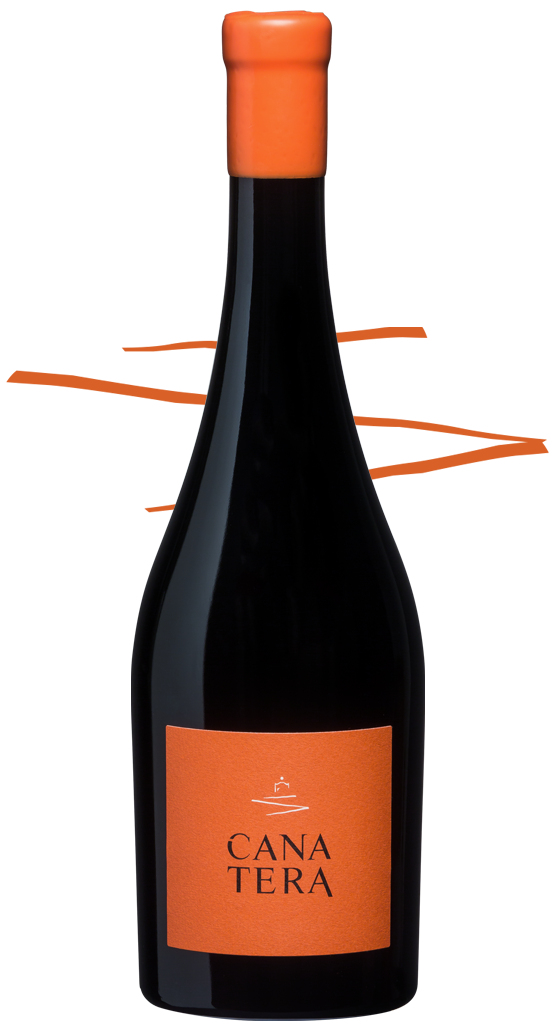T h e B a n d o l A p p e l l a t i o n
2 6 0 0 y e a r s o f h i s t o r y

The history of Bandol wine goes back more than 2,600 years ago, as evidenced by the amphorae discovered during archaeological digs in the ancient port of Tauroeis (now Six-fours les plages). The Phoceans people founded the colony of Tauroeis and planted the vines that would later become the famous Bandol vineyards, which were already organized in terraces.
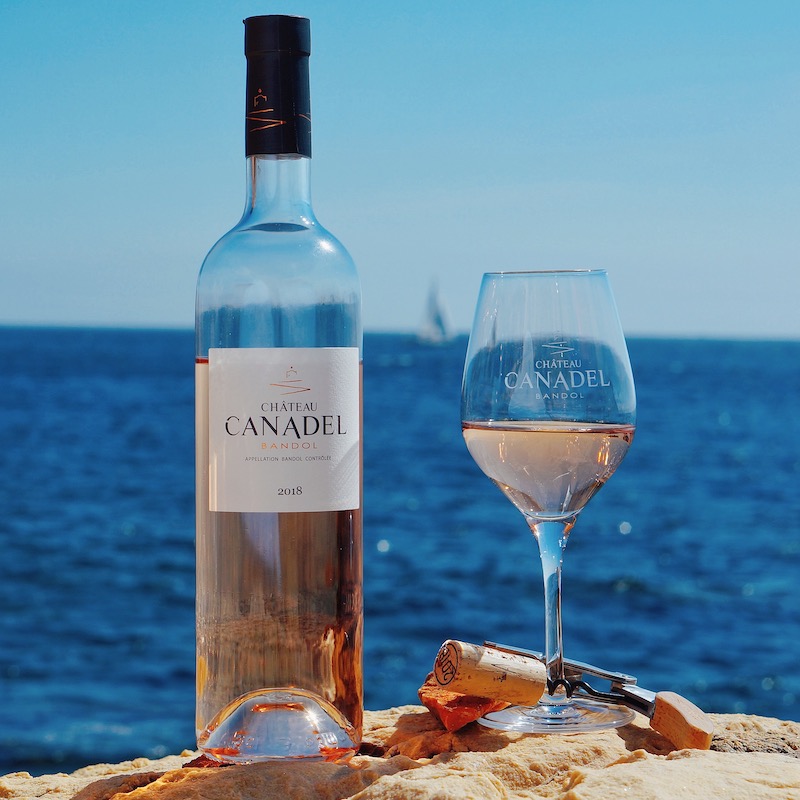
T h e B a n d o l ’ s P o r t
The seaside town of Bandol grew with the expansion of its maritime trade. Bandol wine, well-balanced and suitable for aging, improves during sea voyages. Over time, the port was able to accommodate larger ships who can sail on the ocean, enabling Bandol wine to be transported to the other side of the world. Bandol’s reputation grew, and it became Louis 15’s favorite wine.
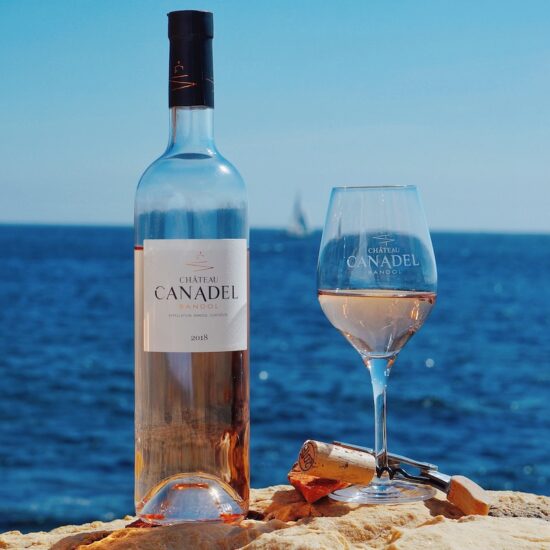


T h e B a n d o l ’ s T e r r o i r
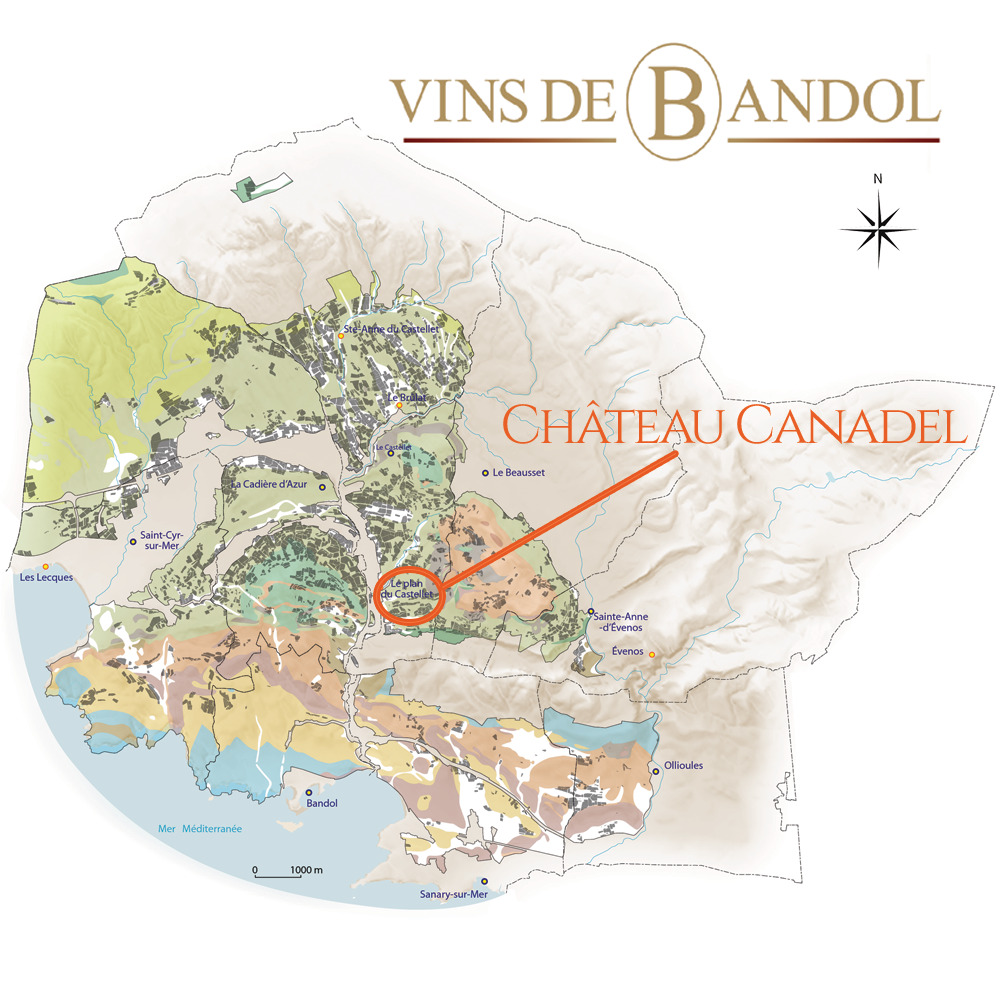
The Bandol terroir extends over 1,500 hectares along the Mediterranean coast, bordered by Caume Moutain and the Sainte Baume mountains, like an amphitheater overlooking the sea. This ideal location benefit from an exceptional environment, between sea and “garrigue”. The typically Mediterranean climate, with 3,000 hours of sunshine a year, and the maritime influence, which brings humidity and freshness, play a key role in defining the Bandol terroir. The Mistral wind from the northwest is slowed by the Sainte-Baume mountains, which limits its speed through the vineyards, while at the same time helping to sanitize the vines by limiting the proliferation of potential diseases.
Geologically speaking, the Bandol appellation is situated on a thrust zone (during the formation of the Alps, geological layers slid over each other over several kilometers). The terroirs are very different, with soils of varying degrees of clay-limestone depending on location and altitude, offering a lovely palette of wines for each vintage.
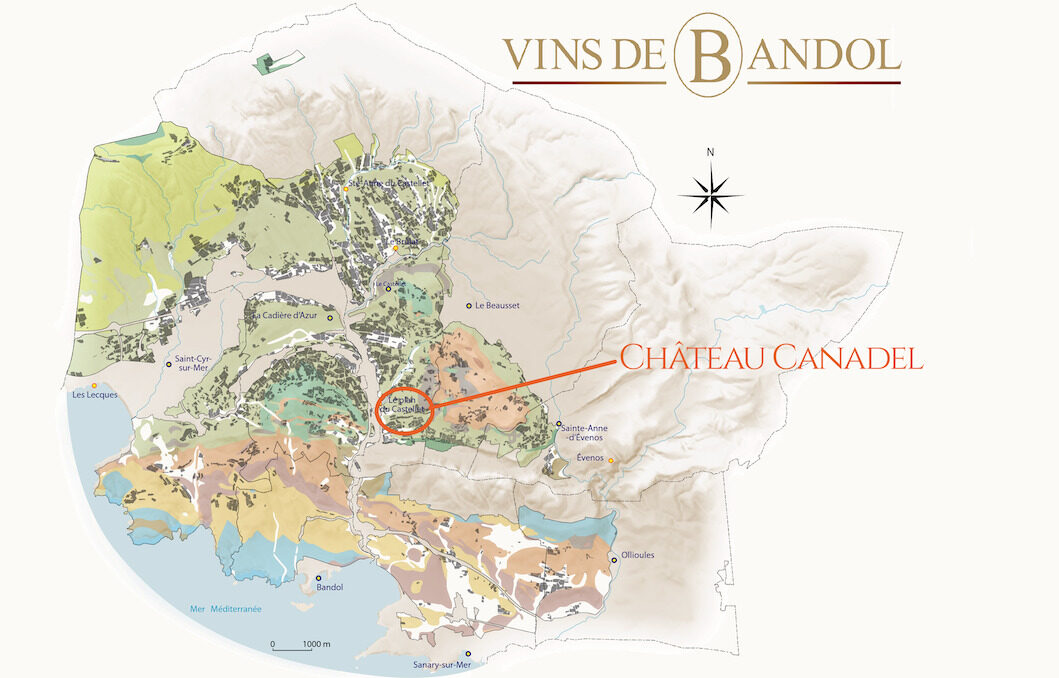
The Bandol terroir extends over 1,500 hectares along the Mediterranean coast, bordered by Caume Moutain and the Sainte Baume mountains, like an amphitheater overlooking the sea. This ideal location benefit from an exceptional environment, between sea and “garrigue”. The typically Mediterranean climate, with 3,000 hours of sunshine a year, and the maritime influence, which brings humidity and freshness, play a key role in defining the Bandol terroir. The Mistral wind from the northwest is slowed by the Sainte-Baume mountains, which limits its speed through the vineyards, while at the same time helping to sanitize the vines by limiting the proliferation of potential diseases.
Geologically speaking, the Bandol appellation is situated on a thrust zone (during the formation of the Alps, geological layers slid over each other over several kilometers). The terroirs are very different, with soils of varying degrees of clay-limestone depending on location and altitude, offering a lovely palette of wines for each vintage.
M o u r v è d r e , T h e K i n g o f B a n d o l
The Mourvèdre. This noble and challenging grape variety is rarely planted in French vineyards and is the star of the Bandol Appellation. With its slow and late ripening, Mourvèdre thrives in the microclimate offered by the Bandol’s vineyards. To produce Red Bandol, the Mourvèdre must be the main grape variety, making up between 50 and 95% of the wine blend.
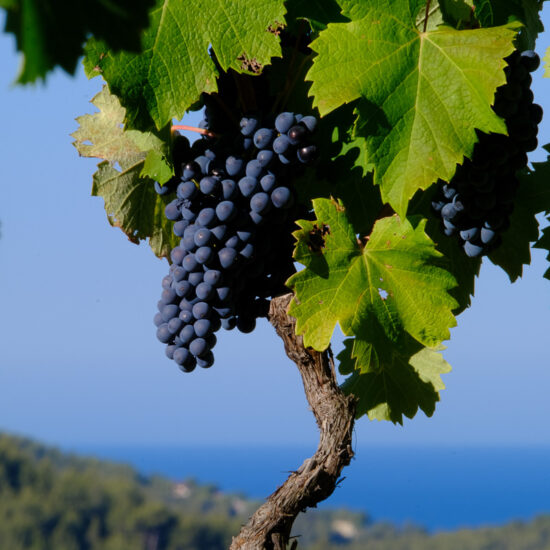
T o b e c o n t i n u e d . . .
This page is still under construction. In the coming weeks, we’ll be telling you all about the story of Jim Harrisson, the best Bandol estates, the best Bandol wines …

